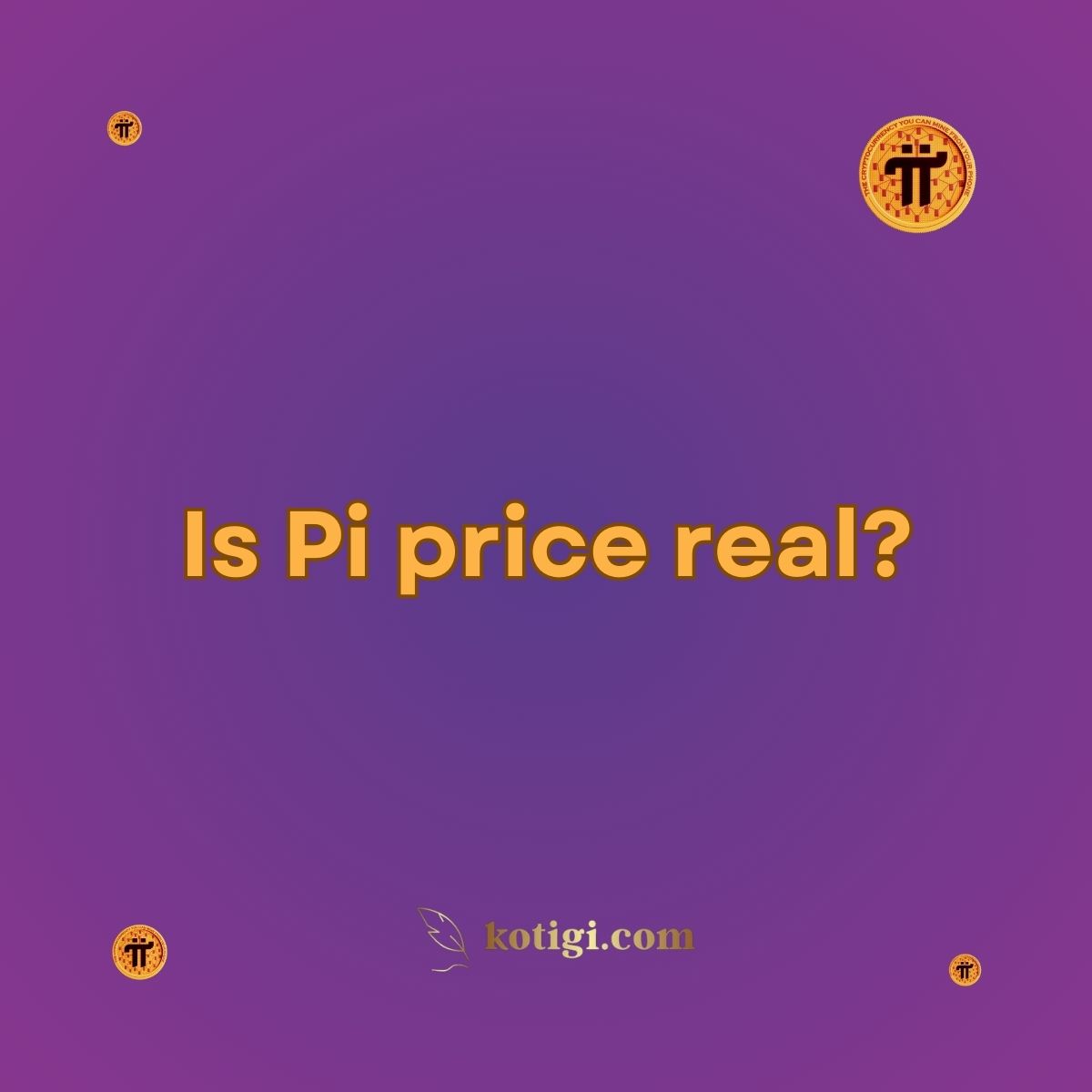
The rise of Pi Network has sparked discussions about its potential and, more importantly, the value of its cryptocurrency, Pi. While the network boasts millions of users, many are left wondering whether Pi price is real and, if so, how it compares to other cryptocurrencies. In this article, we’ll explore the facts surrounding Pi price, its current state, and what users can expect in the future. Whether you’re an active Pi miner or just curious about the project’s progress, this post will provide valuable insights into the reality of Pi’s pricing.
What is Pi Network?
Overview of Pi Network
Pi Network is a digital currency initiative that aims to make cryptocurrency accessible to everyone. Launched in 2019 by a group of Stanford graduates, the project allows users to mine (generate new units of cryptocurrency) Pi coins using a mobile app without the need for traditional mining hardware.
How Does Pi Work?
Pi Network allows users to mine Pi by simply interacting with the app. Unlike Bitcoin, which uses a resource-intensive proof-of-work mechanism (a consensus algorithm where miners solve complex problems to validate transactions), Pi uses a unique consensus algorithm (agreement method) that relies on user trust circles and mobile validation. This energy-efficient approach makes it more accessible to a broader audience.
Current Status of Pi Network
As of now, Pi Network remains in its development stages. The project is transitioning from its testnet (a simulated version of a blockchain used for testing) phase to the much-anticipated mainnet launch, which is expected to enable Pi’s listing on exchanges and give it a legitimate price.
Is Pi Price Real?
The Current Reality
At present, Pi does not have an official price on any recognized cryptocurrency exchanges. The Pi Network team has clarified that any prices seen on informal platforms or forums do not reflect the true value of Pi. These prices are speculative (based on guesswork or assumptions) and not endorsed by the network’s developers.
Why Pi Isn’t Yet Tradable
One key reason for Pi’s current lack of a real price is that the project is still in its enclosed mainnet phase. Until Pi transitions to an open mainnet (a blockchain accessible by the public), it won’t be listed on public exchanges, which is necessary for price discovery based on supply and demand in the market.
Unofficial Pi Price Listings
There have been cases where some platforms, mainly unofficial trading groups, have attempted to assign a value to Pi. However, these are speculative and carry risks, as they do not represent Pi’s true market value. Users are strongly advised to avoid these unauthorized trades.
When Will Pi Have a Real Price?
Pi will have a real, verifiable price once it is listed on established cryptocurrency exchanges. This is expected to happen during the project’s mainnet phase, though no official timeline has been provided. Only then will supply and demand dictate Pi’s value in the open market.
How Pi Price Could Be Determined
Market Factors
Once Pi becomes tradable, several factors will influence its price, including:
- Supply and demand: As with any cryptocurrency, the balance of buyers and sellers will play a huge role in determining Pi’s market value.
- Utility of Pi: If the Pi ecosystem (the network of services and apps built around Pi) successfully develops useful apps and services, demand for the coin could rise, thereby increasing its price.
- Adoption and network growth: The larger and more active the Pi user base, the more valuable Pi may become in the eyes of investors and traders.
Exchange Listings
One of the key moments in Pi Network’s future will be its listing on cryptocurrency exchanges like Binance, Coinbase, or Kraken. These platforms will enable broader market participation and allow the Pi price to be set based on global demand.
Pi’s Total Supply and Mining Rate
Pi’s total supply is currently unknown, as mining is still ongoing. Once the total supply is determined, this factor will also impact the price. Additionally, the mining rate is designed to decrease over time as the network grows, making Pi more scarce and potentially more valuable.
Risks and Considerations
Risks of Speculative Trading
Until Pi is officially listed on exchanges, any attempt to trade Pi carries significant risks. Speculative trading can lead to scams or fraudulent schemes, where users may lose their assets without any legal recourse.
Security of Pi Wallets
With Pi still in its enclosed network phase, users should be cautious about wallet security. There have been reports of fraudulent schemes asking users to trade their Pi coins. Only trust the official Pi Network wallet and team communications.
Patience is Key
It’s important for users and prospective Pi traders to exercise patience. The cryptocurrency market is volatile (prone to unpredictable changes), and early participation in speculative markets can lead to potential losses. Waiting for the official Pi launch and exchange listings is the safest approach.
Conclusion
The Pi price, as of now, is not officially real. Any current values seen in informal or unofficial markets are speculative and not backed by the Pi Network team. Once Pi transitions to an open mainnet and is listed on established cryptocurrency exchanges, its price will be determined by market forces. Until then, it’s important for users to be cautious of scams and speculative trading. Pi Network’s potential remains promising, but users should be patient as the project develops towards a fully functioning and legitimate cryptocurrency ecosystem.
Is Pi price real?
The Pi price is not officially listed on public exchanges yet. While some informal platforms have tried to assign a value to Pi, these are not recognized by the Pi Network core team. The true value of Pi will only emerge once the mainnet is fully launched, and Pi becomes tradable on legitimate cryptocurrency exchanges.
Key Takeaways:
- Users should avoid speculative trading and be cautious of scams while Pi is still in its enclosed phase.
- Pi Network is still in development and has not launched an official, tradable cryptocurrency.
- Any current prices of Pi are speculative and not endorsed by the Pi Network team.
- Pi will have a real price once it is listed on recognized cryptocurrency exchanges after the mainnet launch.
- The factors that will influence Pi’s price include supply and demand, utility, and network growth.





